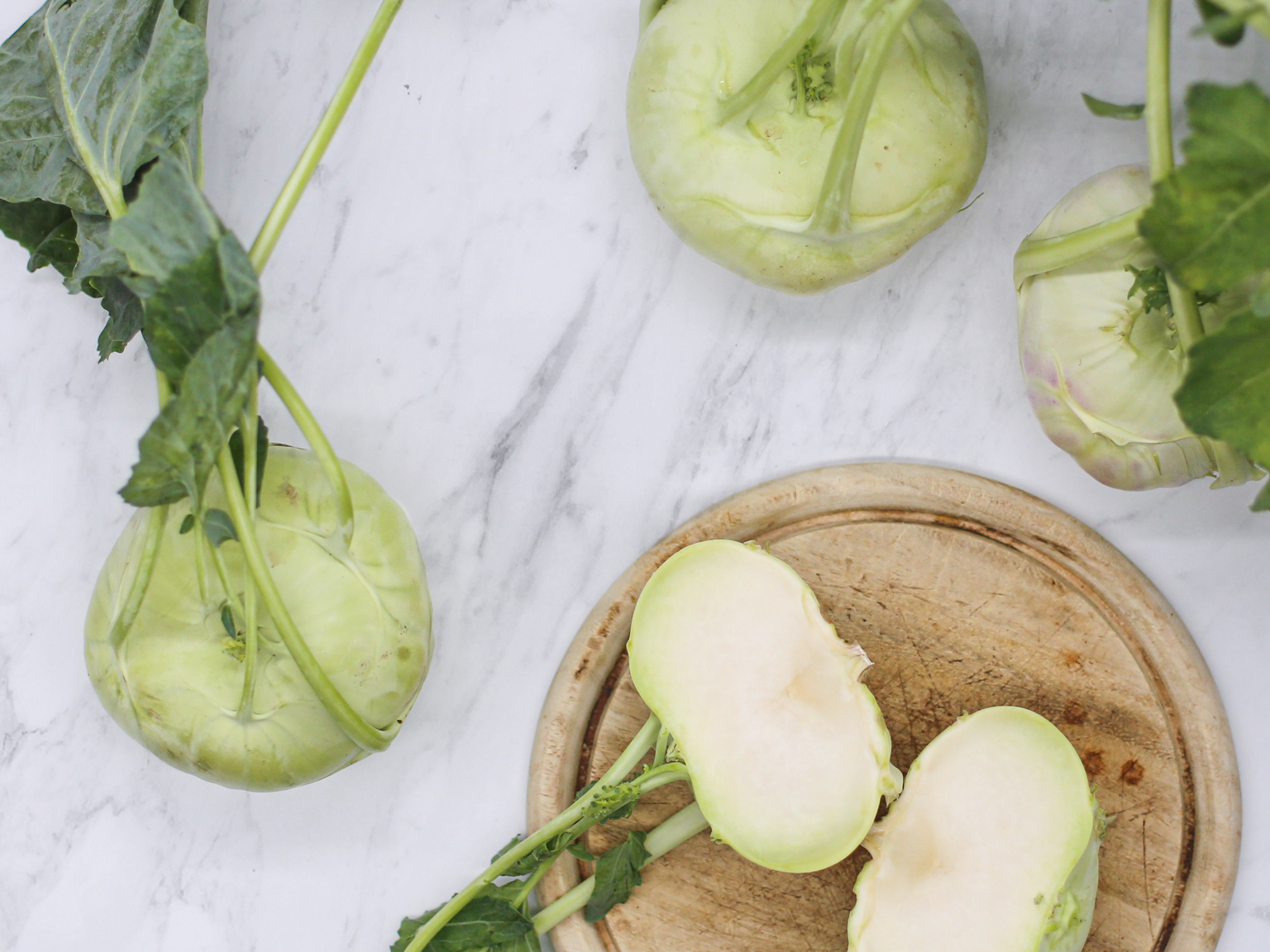Kohlrabi is also known as German turnip but if you take its direct meaning it’s cabbage turnip from the German, sort of wild cabbage with a sturdy stem that resembles that of a turnip. Hence the name. Kohlrabi has been bred by artificial selection, that is selective breeding of species the purpose of which is the emergence and development of the particular traits that people seek – a thick roundish stem apparently in this case. Young kohlrabi has a sweet rich flavour and crunchy texture resembling a mix of radish, cucumber, and broccoli. Some people though prefer to compare it with an apple with a hint of onion. It’s mildly spicy – if you never ate it before, just go ahead, slice it, drizzle a little olive oil on top and sprinkle with salt. It will be plain great. The classic vegetable is pale green but there are more amusing varieties, such as Kolibri kohlrabi that produces bulbous stems of bright purple colour with smooth skin and succulent, crisp flesh. This one distinctly tastes like an apple with a cabbage-y flavour. An acquired taste for someone, a desired – for us. Shredded, kohlrabi plays a great role in salads. Let’s have a look at kohlrabi and carrot slaw for instance.
With the spring arrival and us seeking for some colourful food, this recipe is a great start. Peel, trim and shred one kohlrabi, ¼ of a purple cabbage head, 2-3 medium carrots. Mix the veggies, add some finely minced onion (if desired), a sprig or two of coriander, 60 g / ¼ cup of mayo, 1 Tbsp each of vinegar and sugar, salt and pepper. Mix well until fully coated, chill and serve with sausages, plain bread and butter, or as an appetizer. We usually think of kohlrabi as a European food staple, but it’s actually not the whole truth. This crop is also popular in India since the 17th century, it’s known as knol khol there. Let’s try to cook it Punjabi style. Take 500 gr / 1 lb of kohlrabi and cut it into medium-sized slices, you can even leave the tender leaves and the skin on (but don’t forget to wash it thoroughly then). Heat 2 Tbsp of oil in a pan and add 1 Tbsp of finely minced ginger and 1 Tbsp of finely minced garlic, saute until the water evaporates and the paste starts turning brown. It’s time for tomato puree (take 3 tomatoes for this or an equivalent from the can) and the spices (1 tsp of ground coriander, 1 tsp of salt, ½ tsp of red chili powder, ½ tsp of turmeric powder, ½ tsp of garam masala – classic Indian flavours). Cook for a couple of minutes and add your knol khol, then continue cooking for another 10 minutes on low heat. If everything is too thick, you might want to use an extra cup of plain water. Add it and finish cooking until kohlrabi is tender. Take away from the stove, garnish with some coriander and young kohlrabi leaves.











What do you think?